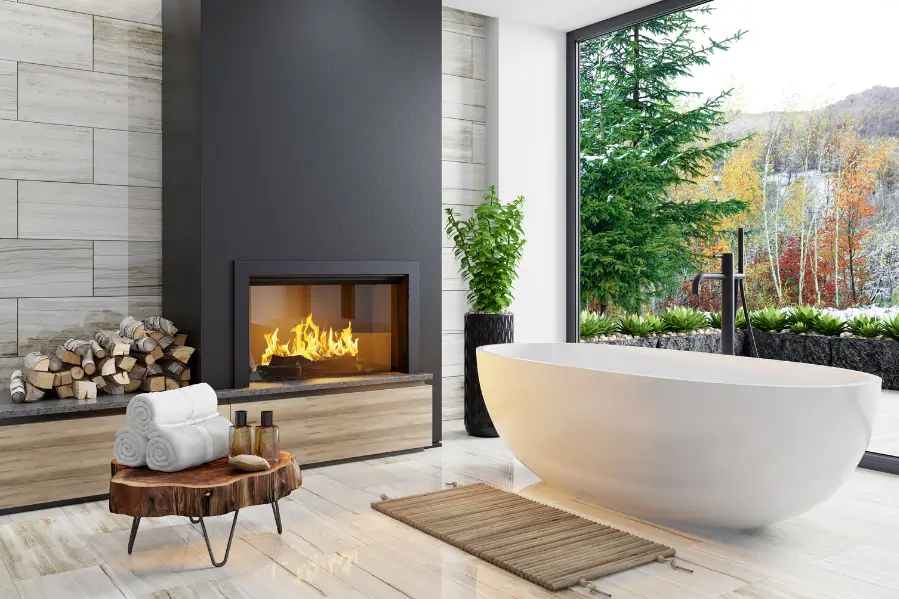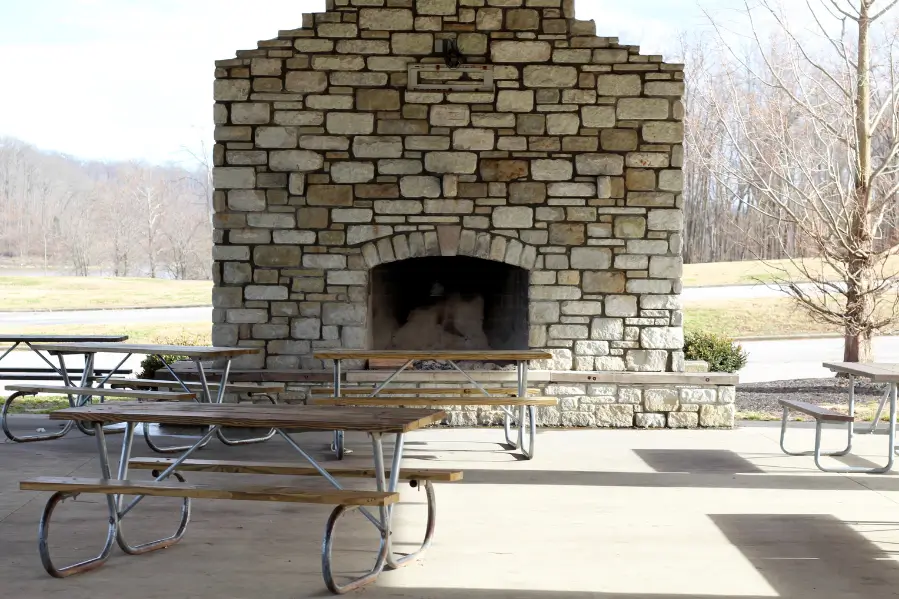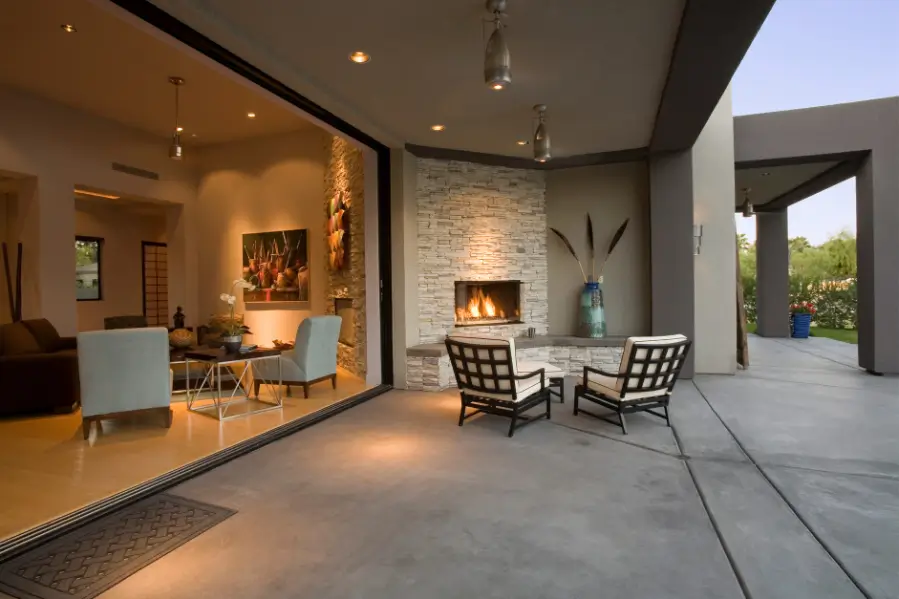A home would benefit greatly from having an outside fireplace. One’s physical and mental well-being can be enhanced by getting cosy by a fire, as shown by studies.
An aesthetically pleasing and useful focus point for backyards may be created with outdoor fireplaces, which can be stunning complements to properties. But, especially if you plan to build a fireplace outside from scratch, these require careful planning even before you start the construction.
So you’ve made the decision to level up your backyard? Perhaps you’re curious about the process of building a fireplace. Does it suit your family and way of life well? Therefore Make sure you adhere to these instructions in order to construct a fireplace outdoors that will last for generations.
What You’ll Need
Tools
- Gloves for protection
- Tamper
- Measurement tape
- The masonry hammer
- Hammer
- Trowel for concrete
- Shovel
- Bubble level
- Circular saw
- Square
- Hacksaw
- Pan for mixing
- Mortar
- Stakes made of wood or metal
Material
- 33 whole concrete cinder blocks, each measuring 8 inches by 8 inches by 16 inches
- 12 half concrete cinder blocks, each measuring 8 inches by 8 inches by 8 inches
- Manufactured stone veneer
- Six cement backer boards
- Two 24-by-24-inch metal flue caps
- Mortar
- 26 80-lb. bags rapid-setting concrete
- Six fifty-pound bags gravel
- Nails
- 2 1/2-inch
- 2 two-by-sixes
- 42-inch by 6-feet rebar
- 2 steel angles
- 1 1/2-inch by 72-inch
- Six fireplace bricks, each measuring 42 by 32 inches
- Masonry nails
Instructions for Constructing an Outdoor Fireplace

Here is the complete manual you would need in order to make your own outdoor fireplace for your house. Follow these steps, and you’ll have a beautifully constructed fireplace.
Step 1: Select the Outdoor Fireplace
The outdoor space fireplaces should be placed in a convenient location near the house, but not close enough that it poses a safety risk or becomes an inconvenience. Depending on local regulations, a minimum distance of 20 feet is required between an outdoor fireplace and a house.
Smoke might be trapped between nearby table umbrellas. There should be considerable assistance beneath the fireplace. There should be a drainage of the nearby water far from the fireplace. The concrete pad beneath or surrounding the fireplace can eventually collapse if water builds up there.
Step 2: Make the pad’s space clear and flat
Remove all vegetation and dig a 70-by-56-inch portion of the earth. Level up and flatten the ground. Level off and spread out roughly two inches of gravel.
Step 3: Construct the Fireplace Pad Form
Two parts measuring 68 inches each and two sections measuring 40 inches each should be chopped from the two-by-sixes. Use the hammer and nails to assemble the concrete form. Lay the form out on the gravel. Using the square, verify that the form is precisely rectangular and squared off.
Trim the rebar to the perfect size. Position the wood or metal stakes along the outside of the form to maintain it squared, leveled, and in place once the concrete has been filled.
Step 4: Pour in the concrete for the fireplace pad
Using the hoe, combine the quick-set concrete with the contents of the mixing pan. Once the rebar is in place, drop half of the concrete mixture into the form. The rebar should be positioned approximately six inches away from the form’s edges all the way around it. Pour the remaining concrete in.
Step 5: Allow the Concrete Time to Harden
The concrete molds can be removed in a day or two. In about four to five days, the mold will be properly hardened to work on, and a full cure will take around a month.
Step 6: Place the Wood Box in the Fireplace
Arrange seven full-size blocks in a U-shaped arrangement, with two on the sides and three in the back. At the extremities of the U-shape, place the two half-size blocks. The blocks are mortared to the concrete slab. In a three-block layer box, it is the bottom sequence of blocks.
Turn the blocks around for the second course. On the upper course, the gaps from the bottom layer should cross in the middle of the blocks. A copy of the bottom layer (first) is served as the third.
Step 7: Build the Lintel
The steel angle should be cut to 68 inches with the hacksaw. A lintel for support should be placed along the front of the wood box.
Step 8: Place the Fireplace Bricks in Place
Put the two fireplace blocks in place atop the wood box and mortar them down securely. The seam connecting the two hearth blocks should be mortared then.
Step 9: Assemble the Firebox
The firebox, a scaled-down counterpart of the wood box, will be constructed on top of the fireplace blocks. Three separate sections will be constructed following the same procedure as the wood box. Using the hacksaw, make a 48-inch cut on the steel angle. Lay it out as a support lintel along the front of the firebox.
Step 10: Put the chimney caps on
Place the two-chimney tops next to each other on the top of the firebox.
Step 11: Install the Veneer Stone
Cut and arrange the cement board over the entire fireplace surface that is going to be covered in veneer stone. After applying mortar to the board, masonry nails are used to secure it in place. Spread mortar over the cement board, then top it with veneer stone.
Building Your Fireplace: Key Tips for Safe and Efficient Construction

Building a fireplace requires careful planning and attention to detail to ensure both safety and efficiency. So here are a few key tips for safe fireplace build.
Consider using a Fireplace Kit
Think about constructing your fireplace with a kit. Fireplace kits eliminate a large portion of the uncertainty in the building process. The majority have fully assembled instruction manuals with adaptable designs, and they can be constructed in a matter of days.
They also fulfill essential requirements for the building of the firebox and chimney. However, you will need to purchase stone finishing on your own.
Check with your Local Planning and Zoning Authority
For information on chimney placement restrictions, check with the planning and zoning authority in your community. The standard is generally at least two feet (0.6 meters) above the ground and at least ten feet (3 meters) away from adjacent structures. A spark arrestor at the very top of your chimney might also be necessary.
Why You Should Choose Smart Remodeling LLC for Your Fireplace Project
If you’re looking to build or upgrade a fireplace, Smart Remodeling LLC is the team you can trust. With over 14 years of experience in custom design, construction, and remodeling, our team offers everything from consultation and design to fireplace conversion and painting.
Our expertise ensures a smooth process, whether you’re starting from scratch or updating an old fireplace. We have been recognized with the Best of Houzz Award for 2024, and have completed over 1,000 projects with no complaints to the BBB.
When you work with Smart Remodeling LLC, you’re choosing quality, experience, and customer satisfaction.
The Bottom Line
Building an outdoor fireplace is one of the greatest methods for turning your backyard into a fantastic destination. By setting up an area for those who love to socialize, your backyard can become a favorite destination for family and guests. Now, you can easily make your own outdoor fireplace using the steps mentioned above. To guarantee a secure and pleasurable experience, always remember to take preventative measures when using your fireplace.
Frequently Asked Questions (FAQs)
1. Is the value of a home increased by an outdoor fireplace?
The value of your house may increase if the outdoor fireplace is a feature of a well-planned outdoor kitchen or living area that could be used for the prolonged warm weather season.
2. What is the lifespan of outdoor fireplaces?
With the right maintenance, an outdoor fireplace can last a long time. Regular maintenance helps your fireplace stay in good operating order and last as long as practicable.
3. Do outdoor fireplaces emit smoke?
A cloud of smoke may arise if there is no breeze and the outside temperature is warm. Your fire will burn brighter and more intensely on a chilly day but less intensely on warm ones.






